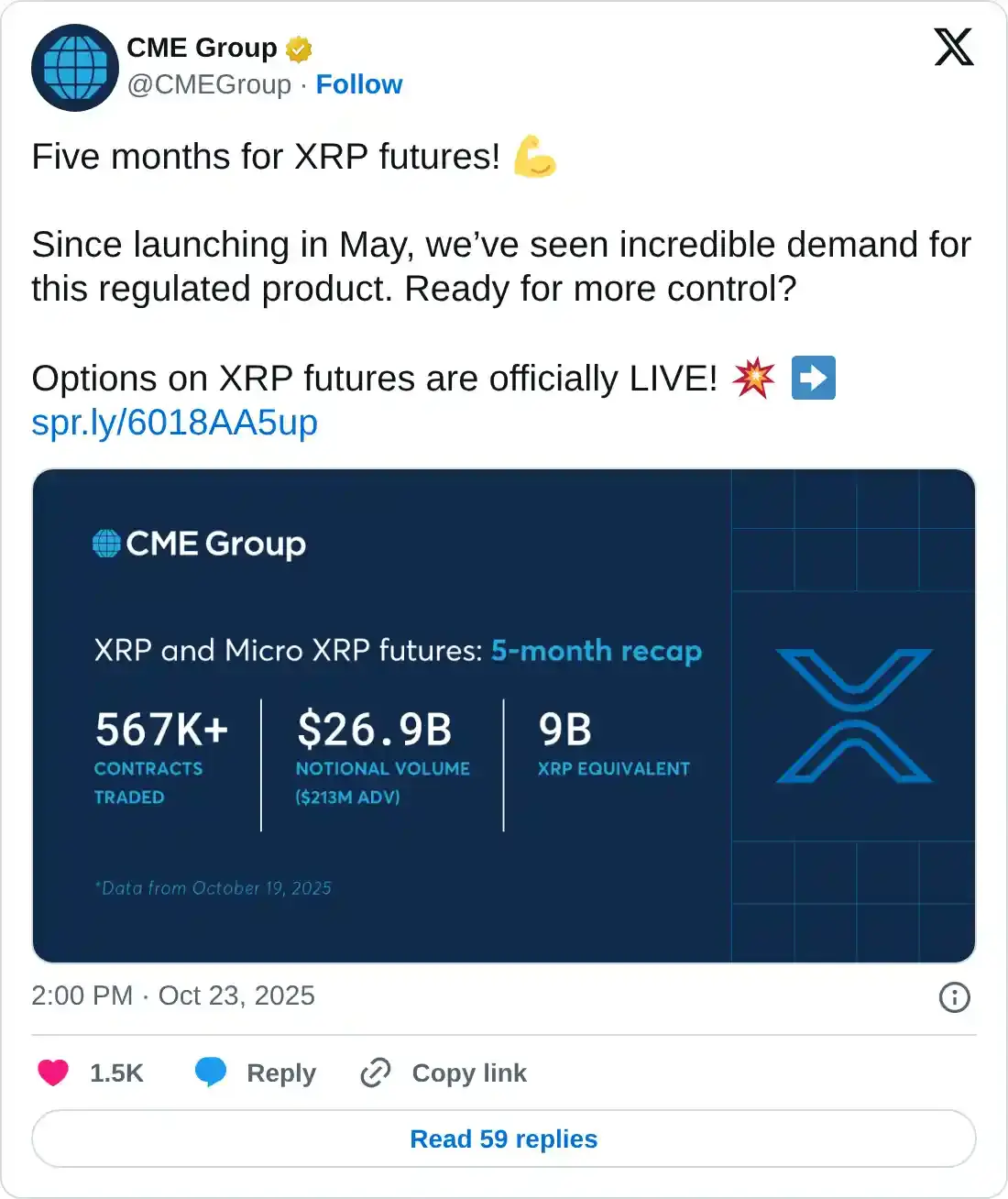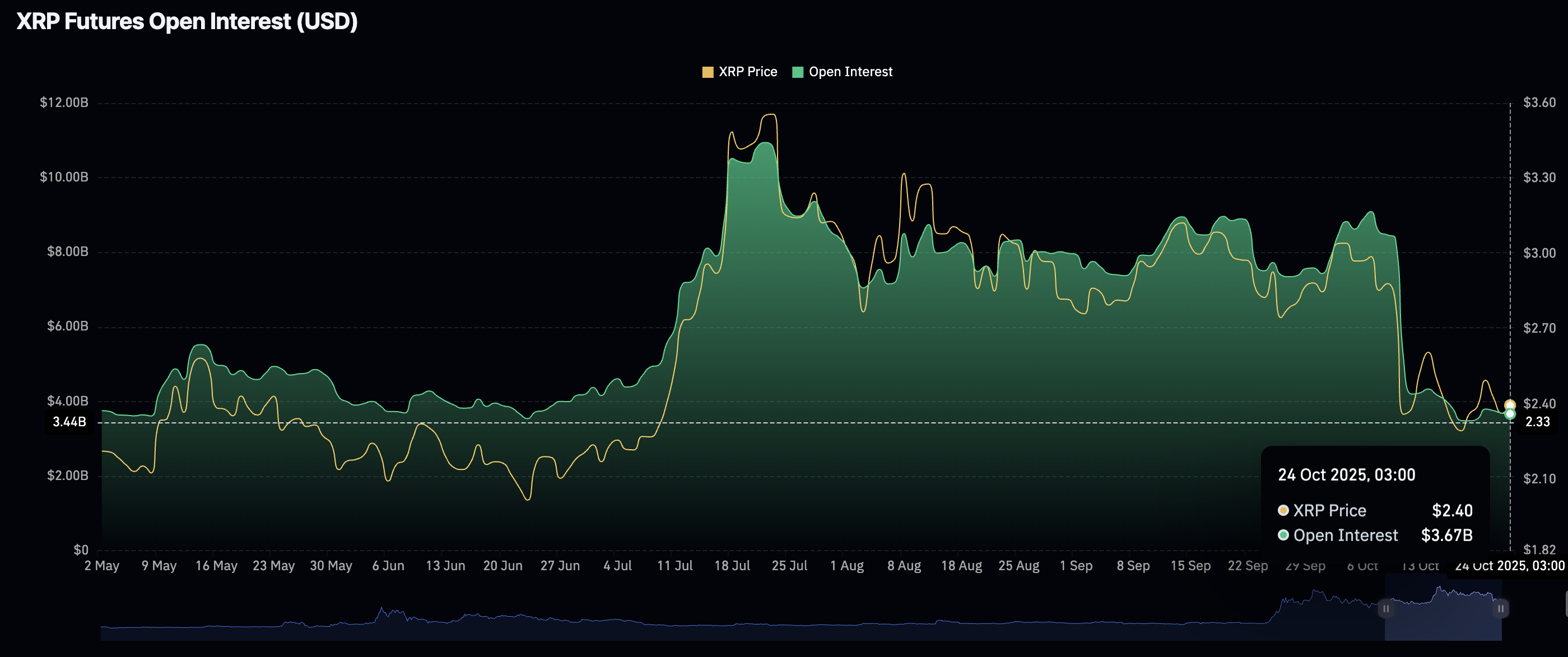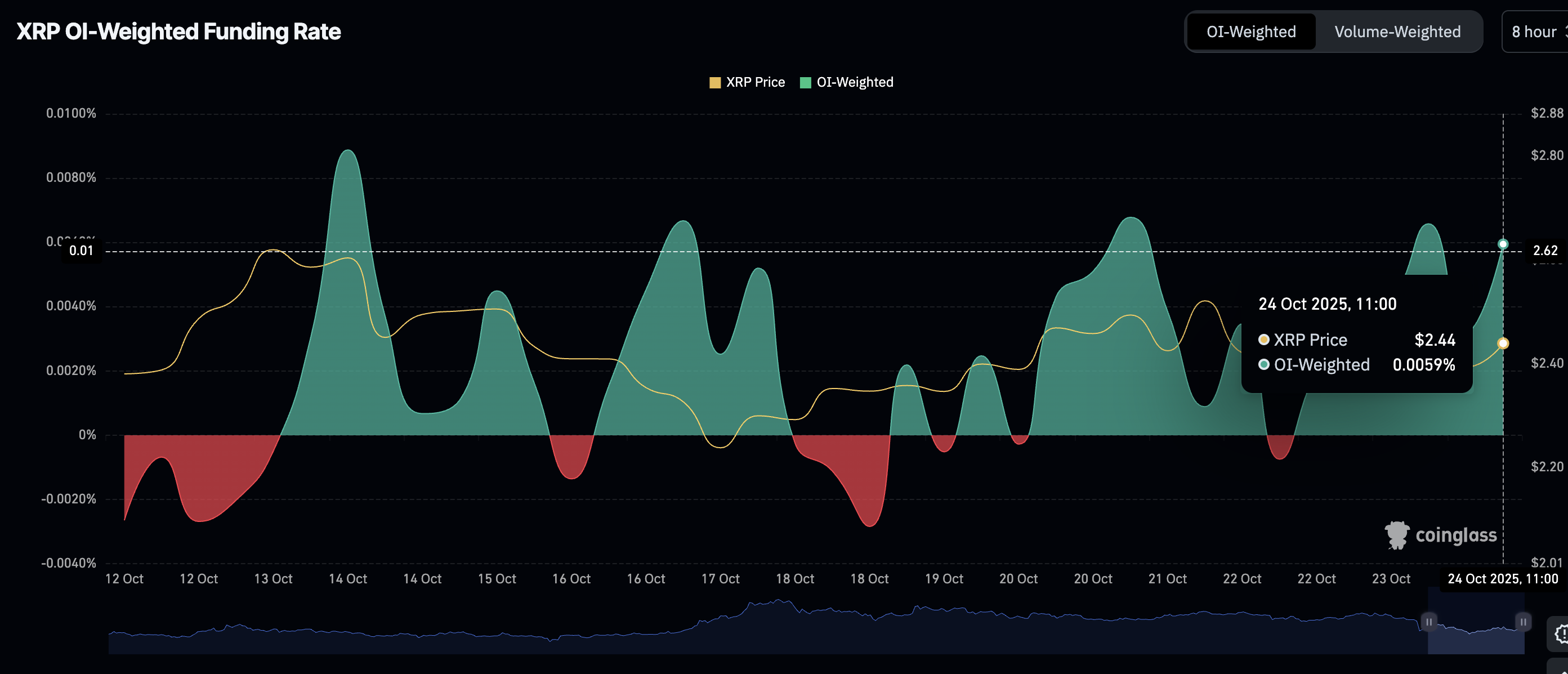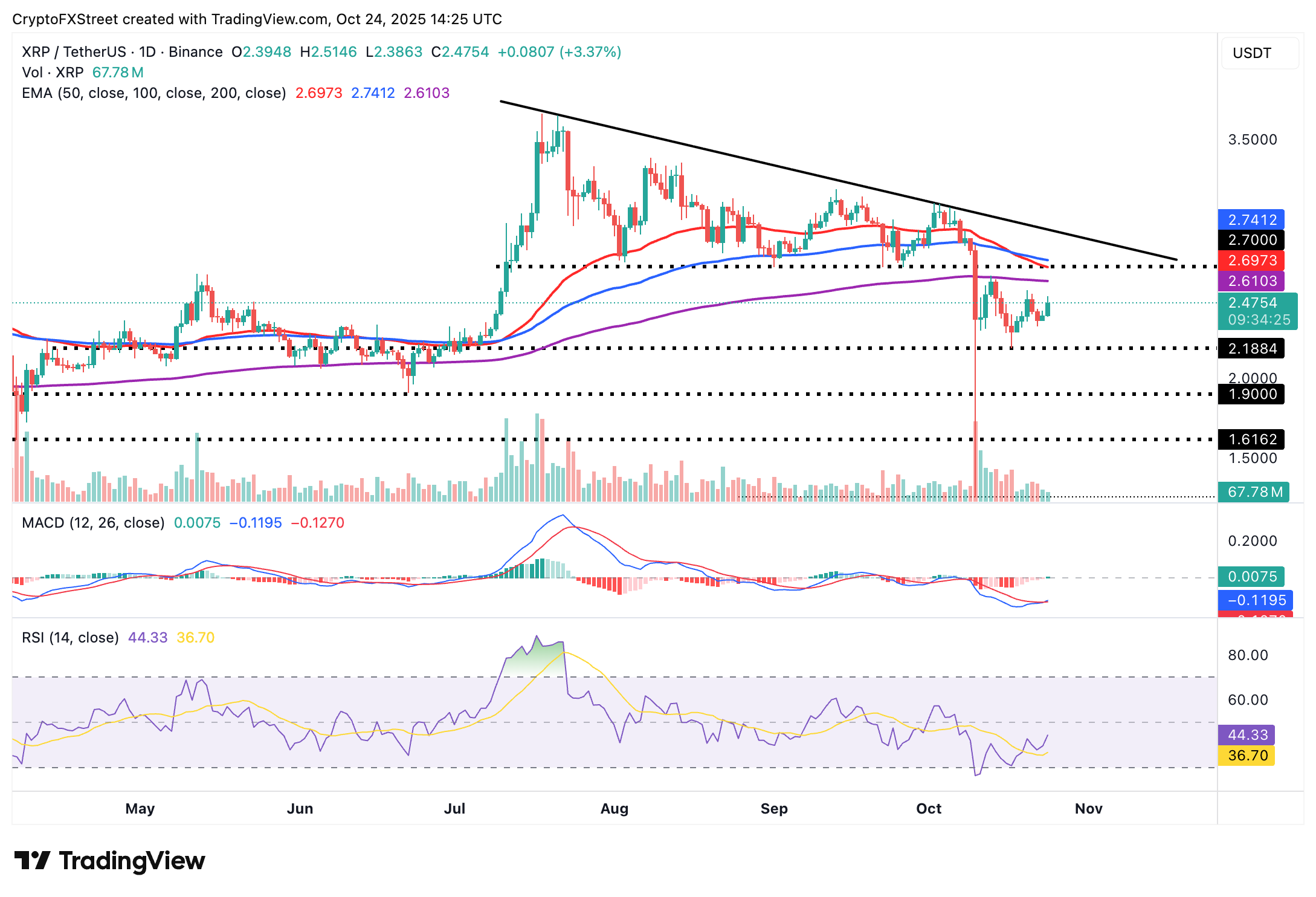Ripple Price Forecast: XRP advances with bullish weekend in focus
- XRP edges higher, targeting a bullish close above $2.50 on Friday.
- Retail demand for XRP futures returns as Open Interest weighted sentiment shoots up.
- XRP and micro XRP futures volume hits $27 billion on CME Group five months after launch.
Ripple (XRP) increases in tandem with the broader cryptocurrency market, trading above $2.45 on Friday. Market participants anticipate volatility following the release of the US Consumer Price Index (CPI), which showed that inflation is rising, but at a slightly slower pace than market forecasts.
The US Bureau of Labor Statistics has published the September CPI report, showing that inflation increased to 3% on an annual basis. The Core CPI, which excludes the volatile prices of food and energy, eased slightly to 3% from 3.1% in August.
XRP futures hit $26 billion on CME Group
Demand for regulated XRP products has significantly grown over the past five months, as evidenced by futures contracts on the CME Group. According to the exchange, XRP and micro XRP futures notional volume is near $27 billion five months after their debut.

The world's largest derivatives exchange, CME Group, launched regulated XRP micro and XRP derivatives in April, adding to a growing number of listed digital assets, including Bitcoin (BTC), Ethereum (ETH) and Solana (SOL).
One futures contract is worth 50,000 XRP, with a micro contract representing 2,500 XRP. Both contracts are cash-settled, traded on CME Globex and benchmarked against the CME CF XRP-Dollar Reference Rate.
Meanwhile, XRP has seen a sharp rebound in the OI-weighted funding rate, rising to 0.0059% on Friday from 0.0032% on Wednesday. The OI weighted funding rate tracks the level of trader interest in XRP.
A sustained increase signals that traders are confident about rejoining the market, piling into long positions, which strengthens the token's short-term bullish picture.

XRP OI-Weighted Funding Rate | Source: CoinGlass
Despite the sharp increase in the OI-weighted funding rate, traders should be cautiously optimistic, given that futures Open Interest is lagging. According to CoinGlass data, the notional value of outstanding futures contracts averages $3.67 billion on Friday, down from the October peak of $9 billion. In other words, investors are still on the sidelines, unconvinced that XRP can sustain its recovery in the short term. A steady increase in futures OI is required to support the price increase.

XRP Futures Open Interest | Source: CoinGlass
Technical outlook: Can XRP steady its recovery into the weekend?
XRP is trading above $2.45 at the time of writing on Friday, supported by a buy signal from the Moving Average Convergence Divergence (MACD) indicator on the daily chart.
Traders would be inclined to increase exposure if the blue MACD line remains above the red signal line, as the indicator generally rises.
The Relative Strength Index (RSI), which is currently at 44, indicates that bearish momentum is easing heading into the weekend. A breakout above the midline would affirm XRP's bullish outlook.
Moreover, traders will watch for a daily close above $2.50 to ascertain XRP's bullish potential. Other key milestones include the 200-day Exponential Moving Average (EMA) at $2.61, the 50-day EMA at $2.69 and the 100-day EMA at $2.74.

XRP/USDT daily chart
Still, traders must be cautiously optimistic as sentiment remains shaky in the broader cryptocurrency market. Any signs of a weak technical outlook could lead to rushed profit-taking, increasing the odds of a reversal toward support at $2.40 and $2.18, tested over the past week.
Ripple FAQs
Ripple is a payments company that specializes in cross-border remittance. The company does this by leveraging blockchain technology. RippleNet is a network used for payments transfer created by Ripple Labs Inc. and is open to financial institutions worldwide. The company also leverages the XRP token.
XRP is the native token of the decentralized blockchain XRPLedger. The token is used by Ripple Labs to facilitate transactions on the XRPLedger, helping financial institutions transfer value in a borderless manner. XRP therefore facilitates trustless and instant payments on the XRPLedger chain, helping financial firms save on the cost of transacting worldwide.
XRPLedger is based on a distributed ledger technology and the blockchain using XRP to power transactions. The ledger is different from other blockchains as it has a built-in inflammatory protocol that helps fight spam and distributed denial-of-service (DDOS) attacks. The XRPL is maintained by a peer-to-peer network known as the global XRP Ledger community.
XRP uses the interledger standard. This is a blockchain protocol that aids payments across different networks. For instance, XRP’s blockchain can connect the ledgers of two or more banks. This effectively removes intermediaries and the need for centralization in the system. XRP acts as the native token of the XRPLedger blockchain engineered by Jed McCaleb, Arthur Britto and David Schwartz.

